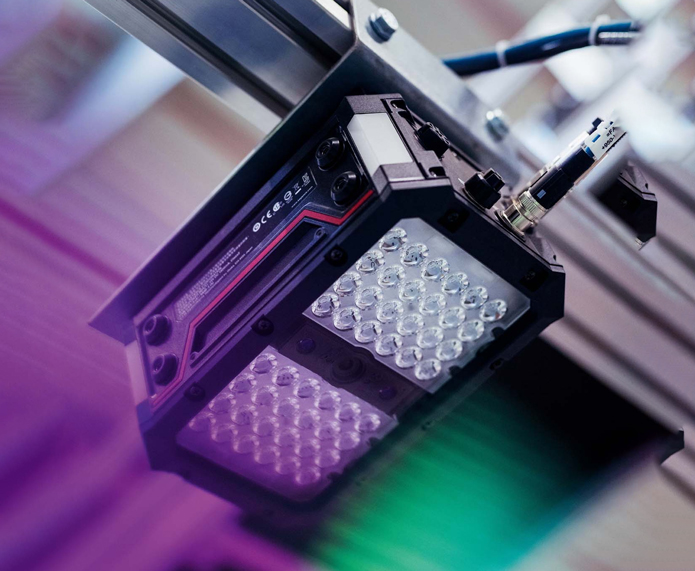At the heart of value creation: Smart Intralogistics Revolution
Laden Sie unseren Kalender herunter
Schritt 1:
Öffnen Sie Ihren Kalender in Outlook unter https://outlook.office.com/calendar.
Unter Windows können Sie auch Ihr Outlook-Programm nutzen. Die nötigen Schritte weichen dann ggf. leicht ab.
Schritt 2:
Klicken Sie auf Kalender hinzufügen und wählen Sie Aus dem Internet abonnieren.
Schritt 3:
Fügen Sie folgenden Link ein und klicken Sie auf Importieren.
https://outlook.office365.com/owa/calendar/d35c67af88f64628a6018dbceff8877f@synaos.com/8d78e80490b8462db720d7687cbe5c204542545792701501371/calendar.ics
Geschafft! Ab sofort profitieren Sie von unsere Events-Kalender und sind immer über die aktuellsten Intralogistik-Events in 2024 informiert.
Schritt 1:
Öffnen Sie Google Calendar unter http://calendar.google.com.
Schritt 2:
Gehen Sie in die Einstellungen und klicken Sie unter Kalender hinzufügen auf Per URL.
Schritt 3:
Fügen Sie folgenden Link ein und klicken Sie auf Kalender hinzufügen.
https://outlook.office365.com/owa/calendar/d35c67af88f64628a6018dbceff8877f@synaos.com/8d78e80490b8462db720d7687cbe5c204542545792701501371/calendar.ics
Geschafft! Ab sofort profitieren Sie von unsere Events-Kalender und sind immer über die aktuellsten Intralogistik-Events in 2024 informiert.
Wenn Sie kein Outlook oder Google Calendar nutzen, funktioniert das Hinzufügen des Kalenders ggf. etwas anders. Sie können diese allgemeinen Schritte befolgen, um unseren Events-Kalender Ihrem Kalender-Programm hinzuzufügen.
Bei Schwierigkeiten können Sie auch Ihre IT-Abteilung um Hilfe fragen.
Schritt 1:
Öffnen Sie Ihr Kalender-Programm.
Schritt 2:
Navigieren Sie zu der Stelle in Ihrem Programm, an der Sie einen Kalender hinzufügen können. Dies ist häufig in den Einstellungen oder der Menüleiste zu finden.
Schritt 3:
Wählen Sie die Option, bei der Sie einen Kalender aus dem Internet/per URL (oder ähnlich) abonnieren können und fügen Sie an der Stelle folgenden Link ein.
https://outlook.office365.com/owa/calendar/d35c67af88f64628a6018dbceff8877f@synaos.com/8d78e80490b8462db720d7687cbe5c204542545792701501371/calendar.ics
Geschafft! Ab sofort profitieren Sie von unsere Events-Kalender und sind immer über die aktuellsten Intralogistik-Events in 2024 informiert.


If the global economy were a living organism, then logistics would be the bloodstream. It transports more or less essential items of life from one place to another, always to where they are needed. And just as with the body, there is a heart at the center of this logistics, which in turn has its own internal cycle: intralogistics. Without well-planned processes and transport routes within company premises, warehouses and production facilities, even the supposedly big sister logistics would collapse. That would cripple the entire economy. One would think that in view of this prominent importance, hardly any part of the value chain would be better and more efficiently organized: digitally, automated and well-monitored.
“But the level of digitization in intralogistics is actually very low,” reports Maik Siedschlag, product manager at SYNAOS. Forklifts and paperwork are still the state of the art at many companies. Data on material flows within logistics centers is often missing.
Software developer SYNAOS wants to change that. Founded in 2018, the start-up launched the first version of its Intralogistics Management Platform at the end of 2019, which should be usable by every company, according to the idea “whether it works with people, forklifts or robots,” as CGO and co-founder Tobias Gagern puts it. An ambitious project, almost too ambitious, as those responsible for the Hanoverian company quickly discovered. <br><br>“Simply selling our outstanding product didn't work,” says Gagern. “We had to offer much more, in principle transformation support to restructure intralogistics.”
“Germany will only survive as a high-wage location with comprehensive automation.” Tobias Gagern, CGO and co-founder
Save resources
The possibilities offered by the product are far-reaching. The SYNAOS software collects data from a company's intralogistics processes and tries to calculate an optimum based on the routes and locations of the various vans. “It's easiest with a robot, where we receive status messages every half a second, which we can combine with the order data,” explains Gagern. Even with a forklift truck, there are several data points, such as where it picks up a package and the one where it drops it off. The less such data can be collected, the less precise the calculated optimum is. “But even in this way, every company achieves efficiency gains,” Gagern is certain.
In contrast to other algorithms, the SYNAOS offering does not depend on being fed with as much information as possible in order to be operational. Instead, SYNAOS software is trained to solve a combinatorial problem, namely the question of how to process as many deliveries as quickly as possible with as little use of machinery as possible. “Companies need an average of 20 to 25 percent fewer resources than before when they rely on our system,” says the head of technology.
This means that anyone who previously needed 20 forklifts can now get by with just 15. However, to achieve this increase in efficiency, the appropriate IT infrastructure is needed. Ideally, the software is linked not only to forklifts and robots, but also to traffic lights, conveyors and fire protection devices on company premises. However, customers are usually still a long way off from this ideal case, as Product Manager Maik Siedschlag reports. “There are virtually no standardized processes for recording and evaluating data in intralogistics.” Many things today are still based on gut feeling. “That is why consulting is now a large part of our job,” he says.

For many customers, SYNAOS acts as a digital Sherpa, showing what needs to be done about the infrastructure and which service providers are available for this purpose. “Of course, we don't offer everything ourselves,” explains Siedschlag. They have good contacts, for example with sensor providers, but in the end, the companies would have to decide for themselves how they want to set up. “It is crucial that they tackle this, otherwise they won't be able to do much with our solution. ”
Configuring the system

Steffen Strickrodt and his team work out exactly what is needed in the end with customers. As Head of Professional Services, he conducts workshops for companies in which the specific goals are defined. “We want to know which processes should be digitized, how automation should work, and how information flows should be structured,” he says. Depending on the customer, this preparatory work is more or less complex. Some people already have very specific ideas, others would exchange ideas without any guidelines. There are also individual problems, depending on which sector the customer is active in. Food manufacturers, for example, must comply with cold chains in their logistics. In automotive manufacturing, on the other hand, it is crucial in which order parts arrive at the assembly line.
The SYNAOS algorithm can map all of this, but the corresponding constraints must be configured before starting.
“The project outline is then created on the basis of these discussions,” says Steffen Strickrodt. How long the implementation then takes is very individual. “In theory, we can set up our system within a few hours,” explains the SYNAOS manager. In practice, however, it usually takes longer, also because all hardware partners have to go through remote onboarding and customers often have requests for changes during implementation.
A crucial question is often whether customers want to use the system as a cloud solution or would rather use it locally as an on-premise solution. “On-premise is often associated with additional expenses, as there are then further special features to consider,” explains Steffen Strickrodt.
Resolve problems quickly
If the software is running, it may still be a matter of fine-tuning. “We remain the first point of contact for customers as soon as something goes wrong in intralogistics,” explains product manager Maik Siedschlag. Quick problem resolution is essential. “Because our software manages business-critical processes,” he says. This means that if intralogistics comes to a standstill, the entire company quickly comes to a standstill. Although the real red alert, i.e. a complete stop, is rare. More often, it is small problems, such as hardware, that cause customers to worry about. “This could be a sensor that malfunctions and is temporarily spamming the system with data,” says Steffen Strickrodt. Not a direct problem with the SYNAOS system, but still one with which customers approach the provider. This additional service is part of the job at SYNAOS, as co-founder Tobias Gagern also points out. “We are the partner who helps companies take the step towards automated intralogistics,” he says. The close support also makes it easier for SYNAOS to continuously improve its own offering. “We still have a lot to learn ourselves.” All in the service of a great mission, as Gagern points out. “Germany will only survive with comprehensive automation.” And this automation is best started at the heart of the economy.
“We remain the first point of contact for customers as soon as something goes wrong.” Maik Siedschlag, product manager
What it brings
Digital intralogistics has a positive effect on many processes in companies. Four examples.
RESOURCE EFFICIENCY ⟶ With the help of digital intralogistics solutions, companies can use existing machinery much more efficiently, for example. With the same number of transport machines — be they forklifts or robots — a larger material flow can be implemented. The management software loads the machines so that they never idle as possible.
OVERVIEW ⟶ Automated handling of intralogistics processes makes it much easier to keep track of orders. Incoming and outgoing stocks are automatically recorded, as is their storage location. Time-consuming inventories that require an interruption of processes are now a thing of the past; instead, inventory lists are available at any time at the push of a button.
DATA PROVIDER ⟶ Automated intralogistics is the first time that the data generated in this area is being properly recorded and catalogued. Companies can then analyse these in order to improve business processes — far beyond intralogistics.
INITIAL IGNITION ⟶ The digitization of intralogistics can be the first step towards comprehensive process reform for a company. The installation of appropriate software and hardware components provides companies with important experience with new technologies, which they can then also apply in other areas of the company.
Schließen Sie sich 1.000+ Intralogistik-Insidern an, die Insights direkt per E-Mail erhalten.

